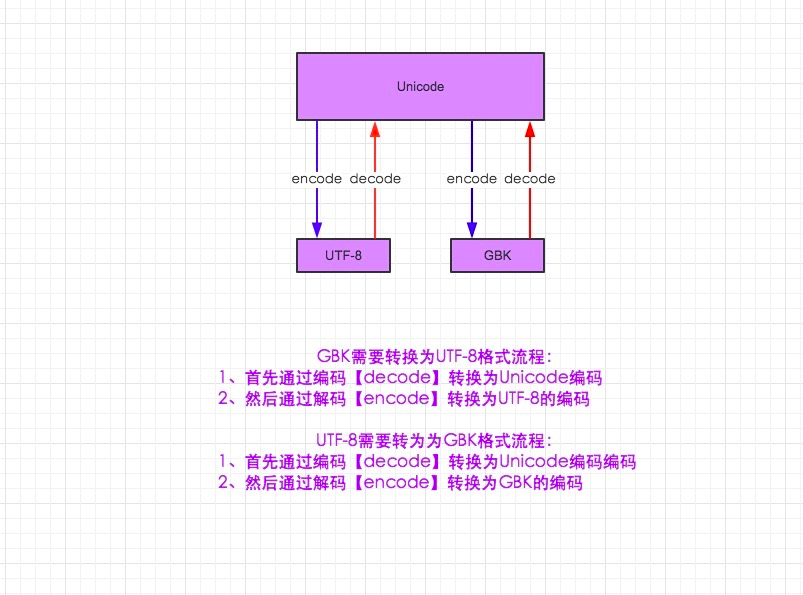D02——C语言基础学PYTHON
C语言基础学习PYTHON——基础学习D02
20180801内容纲要:
1 字符串的系列操作
2 集合
3 文件的读写
4 字符编码转换
5 小结
6 练习:三级菜单(有彩蛋)
1 字符串的系列操作
特性:不可修改。('str' object does not support item assignment)
支持运算:切片、索引、min()、max()、len()等
关于字符串的操作:
#关于字符串的一些操作
'''
name = "zhang\tkanghui" print(name.capitalize()) #capitalize首字母大写
print(name.count("a")) #count计数
print(name.center(,"-")) #center(,“-”)表示总共50个字符,输出占中间位置
print(name.encode())
print(name.endswith("ui")) #判断是不是以ui结尾
print(name.expandtabs(tabsize=)) #将tab在输出时转成相应数量的空格
print(name.find("kang")) #找到字符开头的索引
''' name ="my name is {name} and i am {year} old"
print(name.format(name='zhangkanghui',year=)) #格式化输出
print(name.format_map( {'name':'zhangkagnhui','year':} )) #以字典形式格式化输出
print(name.isdigit()) #判断是否为数字
print(name.isalnum()) #判段是否为阿拉伯
print('abc12/'.isalnum())
print(name.isalpha()) #判断是否为纯英语字母
print('Aa'.isalpha())
print(name.isdecimal()) #判断是否为十进制
print(name.isidentifier()) #判断是否为合法标识符
print(' ab'.isidentifier())
print(name.islower())
print(name.isnumeric())
print('1.2'.isnumeric()) #判断是否为纯数字,小数点也不行
print(name.isspace()) #判断是否为空格
print(name.istitle()) #判断是否为标题,即每个都是首字母大写开头
print(name.isprintable()) #判断是否可打印,tty file,drive file
print(name.isupper()) #判断是否全部为大写
print('+'.join(['','','']))
print(name.ljust(,'*')) #总长为50,左侧开始
print(name.rjust(,'-')) #总长为50,右侧开始
print(name.lower()) #把大写变成小写
print(name.upper()) #把小写变成大写
print(name.lstrip())
print(name.strip()) #去掉两头的空格和回车
print(name.rstrip())
p =str.maketrans('abc','')
print("alex li".translate(p))
print("alex li".replace('l','L',))
print("alex li".rfind('l')) #查找右侧的
print("alex li".split()) #把字符串以空格分离,以列表输出
print("alex li".split('l')) #把字符串以l分
print("1+\n2+3".splitlines()) #去除换行符
print("alex Li".swapcase()) #小写换大写,大写换小写
print("alex li".title()) #变成标题,即每个首字母大写
print(name.zfill())
2 集合(set)
集合是一个无序、不可重复的数据组合。(字符和元组属于不可变序列,而列表支持插入、删除和替换元素;所有的序列都支持迭代;字典dict是无序的,且key必须是唯一的)
用途:
(1)去重:把一个列表变成一个集合。
list_1 = [1,2,4,5,6,2,1,]
list_1 =set(list_1)
print(list_1,type(list_1)) #集合无序、不重复
(2)关系测试:交集、并集、差集、子集、父集、对称差集
运算符:
&交集
|并集
-差集 例:t-a 在t中不在a中
^对称差集(除去交集对称的部分)
<=子集 例:a<=t测试是否a中的每一个元素都在t中
>=父集
list_2 =set([0,66,222,4,6])
print(list_1,list_2)
#交集intersection
print(list_1.intersection(list_2))
#并集union
print(list_1.union(list_2))
#差集differeence in list_1 but not in list_2
print(list_1.difference(list_2))
print(list_2.difference(list_1))
#子集issubset
print(list_1.issubset(list_2))
#父集isupperset
print(list_1.issubset(list_2))
#对称差集
print(list_1.symmetric_difference(list_2)) list_3 =set([1,2,3])
list_4 =set([4,5,6])
print(list_3.isdisjoint(list_4)) #没有交集返回True
集合的基本操作:
#基本操作
list_3.add(999)
print(list_3)
list_3.update([777,888,999])
print(list_3)
print(list_3.pop())
print(list_3.pop())
print(list_3.pop())
print(list_3.pop())
还有一些不常用的,比如:
.remove Remove and return an arbitrary set element.
.discard Remove an element from a set if it is a menber. If the element is not a menber, do nothing.
3 文件(file)
现有如下文件(热爱生命——汪国真):
我不去想是否能够成功
既然选择了远方
便只顾风雨兼程
我不去想能否赢得爱情 既然钟情于玫瑰
就勇敢地吐露真诚
我不去想身后会不会袭来寒风冷雨
既然目标是地平线
留给世界的只能是背影
我不去想未来是平坦还是泥泞
只要热爱生命 一切,都在意料之中
(1)文件的打开模式
- r,只读模式(默认)
- w,只写模式。【不可读;不存在则创建;存在则删除内容;】
- a,追加模式。【可读; 不存在则创建;存在则只追加内容;】
'''
data =open("yesterday",encoding="utf-8").read()
#1encoding:windows默认GBK
#2'r'只能读;'w'只能写,且是创建一个新的文件,如果文件名已存在,则会覆盖;'a'只能写,append追加补充不会覆盖源文件
print(data)
'''
#f =open("yesterday",'r',encoding="utf-8")
#f =open("yesterday",'w',encoding="utf-8")
#f =open("yesterday",'a',encoding="utf-8")
'''
f =open("yesterday",encoding="utf-8") #赋给f一个内存对象,又叫文件件句柄
data =f.read()
print(data)
'''
- r+,可读写文件。【可读;可写;可追加】
- w+,写读
#读写'r+'读和追加,能读能写,但是写只能在尾部追加无论读取光标的位置在哪
f =open("yesterday2",'r+',encoding="utf-8")
print(f.readline())
print(f.readline())
print(f.readline())
print(f.tell())
f.write("-------NB--------") #写读'w+'能写能读,创建新文件写,读仍然是在为不追加,无论读取光标位置
f =open("yesterday2",'w+',encoding="utf-8")
f.write("-------NB--------\n")
f.write("-------NB--------\n")
f.write("-------NB--------\n")
print(f.tell())
f.seek(10)
print(f.readline())
f.write("should be at the begining of the second line")
f.close()
'''
#追加读写'a+'
"U"表示在读取时,可以将 \r \n \r\n自动转换成 \n (与 r 或 r+ 模式同使用)
- rU
- r+U
"b"表示处理二进制文件
- rb
- wb
- ab
二进制文件的读取:
#Author:ZhangKanghui '''
#'rb'二进制。视频以二进制读取。
f =open("yesterday2",'rb')
print(f.readline())
'''
f =open("yesterday2",'wb')
f.write("Hello world\n".encode()) #二进制便把文件str转换成byte用encode()
等等,还有~with语句
为了避免打开文件后忘记关闭,可以通过管理上下文,即:
with open('log','r') as f:
....
如此方式,当with代码块执行完毕时,内部会自动关闭并释放文件资源。
(2)文件的读取
读取前五行:
#读取前五行
'''
f =open("yesterday",encoding="utf-8") for i in range(5):
print(f.readline()) print(f.readline())
print(f.readline())
print(f.readline())
print(f.readline())
print(f.readline())
不读取第十行:
#不读取第十行
#f =open("yesterday",encoding="utf-8")
#low bige loop
'''
#print(f.readlines()) #把文件读取成一个列表,但这种方法只适合小文件读取
#for line in f.readlines():
for index,line in enumerate(f.readlines()):
if index == 9:
print("-----我是分割线-----")
continue
print(line.strip()) #若不换行, .strip去除换行符
'''
#high bige loop
'''
count = 0
for line in f:
if count ==9:
print("------我是分割线-------")
count += 1
continue
print(line) #这种文件的读取方式效率最高,一行一行的读,内存对象一直都只有一行
count +=1
重新读取文件:
f.read()读取文件时,从头到尾。再次读取文件时需要先将读取位置光标调到开头。
f.tell() 文件读取位置,打印当前读取光标位置
f.seek() 寻找当前读取光标位置
#重新读取文件
print(f.tell()) #文件读取光标位置
#print(f.read(50))
#print(f.tell())
print(f.readline())
print(f.readline())
print(f.readline())
print(f.tell())
f.seek(0) #文件读取光标移到0,经常与.tell联合使用,以便再次读取文件 print(f.encoding) #数据编码
(3)文件的操作
a 截取
#截取truncate
f =open("yesterday",'a',encoding="utf-8")
f.truncate(10) #无论读取光标在哪都是从头开始截取
b 修改
#Author:ZhangKanghui
f =open("热爱生命",'r',encoding="utf-8")
f_new =open("热爱生命.bak",'w',encoding="utf-8")
for line in f:
if "我不去想能否赢得爱情" in line:
line =line.replace("我","你")
f_new.write(line)
f.close()
f_new.close()
(4)文件关闭
f.close()
4 字符编码的转换
核心:Unicode,默认中英文都是2个字节16位
Utf-8可变长的字符编码,所有英文字符按ASCII码1个字节8位,中文3个字节。中国有钱~
详细文章:
http://www.cnblogs.com/yuanchenqi/articles/5956943.html
http://www.diveintopython3.net/strings.html

再来说说Python3中字符编码
1 python3默认文件编码是utf-8
2 声明变量默认编码是unicode
3 str和bytes做了明确的区分。bytes就是2进制流,因为python对数据进行操作做了一层封装,否则让你直接看到一堆2进制,你能看出哪个字符对应哪段2进制么?
5 小结
字符编码的理解很关键~
发现插入代码折叠功能~
编程真的是和很难!
6 练习
多级菜单
要求:
- 三级菜单
- 可依次进入各子菜单
- 所需知识点:列表、字典
两种答案:
#Author:ZhangKanghui
data ={
'北京':{
"朝阳":{
"望京":["奔驰","陌陌"],
"国贸":["CICC","HP"],
"东直门":["Advent","飞信"],
},
"昌平":{
"沙河":["old boy","test"],
"天通苑":["链家地产","我爱我家"],
},
"海淀": {},
},
'山东':{
"德州":{},
"青岛":{},
"济南":{},
},
'广东':{
"常熟":{},
"东莞":{},
"惠州":{},
},
}
'''
while True:
for i1 in data:
print(i1)
choice =input("选择进入1>>:")
if choice in data:
while True:
for i2 in data[choice]:
print("\t\t",i2)
choice2 =input("选择进入2>>:")
if choice2 in data[choice]:
while True:
for i3 in data[choice][choice2]:
print("\t\t\t\t",i3)
choice3 =input("选择进入3>>:")
if choice3 in data[choice][choice2]:
for i4 in data[choice][choice2][choice3]:
print("\t\t\t\t\t\t",i4)
choice4 =input("最后一层,按b返回>>:")
if choice4 =='b':
pass
if choice3 == 'b':
break
if choice2 == 'b':
break
'''
#为了实现在每一级都能退出 将True换掉
exit_tag = False
while not exit_tag:
for i1 in data:
print(i1)
choice =input("选择进入1>>:")
if choice in data:
while not exit_tag:
for i2 in data[choice]:
print("\t\t",i2)
choice2 =input("选择进入2>>:")
if choice2 in data[choice]:
while not exit_tag:
for i3 in data[choice][choice2]:
print("\t\t\t\t",i3)
choice3 =input("选择进入3>>:")
if choice3 in data[choice][choice2]:
for i4 in data[choice][choice2][choice3]:
print("\t\t\t\t\t\t",i4)
choice4 =input("最后一层,按b返回>>:")
if choice4 =='b':
pass
elif choice4 =='q':
exit_tag =True
if choice3 == 'b':
break
elif choice3 == 'q':
exit_tag = True
if choice2 == 'b':
break
elif choice2 == 'q':
exit_tag = True
#Author:ZhangKanghui
data ={
'北京':{
"朝阳":{
"望京":["奔驰","陌陌"],
"国贸":["CICC","HP"],
"东直门":["Advent","飞信"],
},
"昌平":{
"沙河":["old boy","test"],
"天通苑":["链家地产","我爱我家"],
},
"海淀": {},
},
'山东':{
"德州":{},
"青岛":{},
"济南":{},
},
'广东':{
"常熟":{},
"东莞":{},
"惠州":{},
},
}
while True:
for i1 in data:
print(i1)
choice =input("选择进入1>>:")
if choice in data:
while True:
for i2 in data[choice]:
print("\t\t",i2)
choice2 =input("选择进入2>>:")
if choice2 == 'b':
break
if choice2 in data[choice]:
while True:
for i3 in data[choice][choice2]:
print("\t\t\t\t",i3)
choice3 =input("选择进入3>>:")
if choice3 == 'b':
break
if i3 in data[choice][choice2]:
while True:
for i4 in data[choice][choice2][choice3]:
print("\t\t\t\t\t\t",i4)
choice4 =input("最后一层,按b返回>>:")
if choice4 =='b':
break
这是尾巴:
最后推荐一个链接:我要自学网,不让打广告只能植入图片了。点击进入学习可以给我加V币。

内容丰富免费
这是随笔~
D02——C语言基础学PYTHON的更多相关文章
- D10——C语言基础学PYTHON
C语言基础学习PYTHON——基础学习D10 20180906内容纲要: 1.协程 (1)yield (2)greenlet (3)gevent (4)gevent实现单线程下socket多并发 2. ...
- D16——C语言基础学PYTHON
C语言基础学习PYTHON——基础学习D16 20180927内容纲要: 1.JavaScript介绍 2.JavaScript功能介绍 3.JavaScript变量 4.Dom操作 a.获取标签 b ...
- D15——C语言基础学PYTHON
C语言基础学习PYTHON——基础学习D15 20180926内容纲要: 1.CSS介绍 2.CSS的四种引入方式 3.CSS选择器 4.CSS常用属性 5.小结 6.练习 1 CSS介绍 层叠样式表 ...
- D07——C语言基础学PYTHON
C语言基础学习PYTHON——基础学习D07 20180826内容纲要: 面向对象进阶学习 1 静态方法 2 类方法 3 属性方法 4 类的特殊成员方法(本节重点) 5 反射(本节重点) 6 异常(本 ...
- D06——C语言基础学PYTHON
C语言基础学习PYTHON——基础学习D06 20180821内容纲要: 面向对象初级学习 1 面向对象 2 类 (1)封装 (2)继承 (3)多态 3 小结 4 练习:选课系统 5 课外拓展:答题系 ...
- D05——C语言基础学PYTHON
C语言基础学习PYTHON——基础学习D05 20180815内容纲要: 1 模块 2 包 3 import的本质 4 内置模块详解 (1)time&datetime (2)datetime ...
- D17——C语言基础学PYTHON
C语言基础学习PYTHON——基础学习D17 20181014内容纲要: 1.jQuery介绍 2.jQuery功能介绍 (1)jQuery的引入方式 (2)选择器 (3)筛选 (4)文本操作 (5) ...
- D14——C语言基础学PYTHON
C语言基础学习PYTHON——基础学习D14 20180919内容纲要: 1.html认识 2.常用标签 3.京东html 4.小结 5.练习(简易淘宝html) 1.html初识(HyperText ...
- D13——C语言基础学PYTHON
C语言基础学习PYTHON——基础学习D13 20180918内容纲要: 堡垒机运维开发 1.堡垒机的介绍 2.堡垒机的架构 3.小结 4.堡垒机的功能实现需求 1 堡垒机的介绍 百度百科 随着信息安 ...
随机推荐
- Write File
Write to File with C++ #include <iostream.h> #include <fstream.h> int main() { const cha ...
- WebService超时
1.web.config配置,<system.web></system.web>里面增加:<httpRuntime maxRequestLength="1024 ...
- [SoapUI]怎样配置SoapUI运行的不同环境,并在Jenkins上面通过命令调用不用的环境
配置SoapUI运行的不同环境 Groovy 脚本来控制environment 在Jenkins上面通过命令调用不用的环境 http://www.soapui.org/Test-Automation/ ...
- RabbitMQ的一些说明
下载安装包后,运行会提示你下再ErLang环境,根据提示下载安装就可以了 RabbitMQ 自己的插件包中带一 个WebUI的管理工具,在RabbitMQ安装目录(bin)下运行 rabbitmq-p ...
- UVa 11136 Hoax or what (STL)
题意:有 n 天,每天有m个数,开始的前一天没有数据,然后每天从这个里面拿出一个最大的和最小的,求 n 天的最大的和最小的差值相加. 析:一看就知道用set啊,多简单的STL,不过要注意,开long ...
- UVa 11925 Generating Permutations (构造法)
题意:给定一个序列,让你从一个升序列变成该序列,并且只有两种操作,操作1:交换前两个元素,操作2:把第一个元素移动到最后. 析:一开始的时候吧,不会,还是看的题解,首先是要逆序来做,这样可能好做一点, ...
- Linux的进程与服务(二)
1.查看进程 ps - processes snapshot ps aue ps -elf [root@localhost ~]# ps aue USER PID %CPU %MEM VSZ RSS ...
- meterpreter命令
meterpreter详解与渗透实战 基本命令: background quit shell irb client.sys.config.sysinfo() 调用windows API:client. ...
- Linux上编译hadoop-2.7.1的libhdfs.so和libhdfs.a
hadoop提供了CMake来编译libhdfs,因此在编译之前需要先安装好CMake工具. 然后进入libhdfs的源代码目录,如:/data/hadoop-2.7.1-src/hadoop-hdf ...
- Uploadify多文件上传插件.NET使用案例+PHP使用案例
ploadify是一个非常好用的多文件上传插件 插件下载:http://www.uploadify.com 下载后需要用到的文件: 接下来就是直接添加代码: Default.aspx代码 <%@ ...
